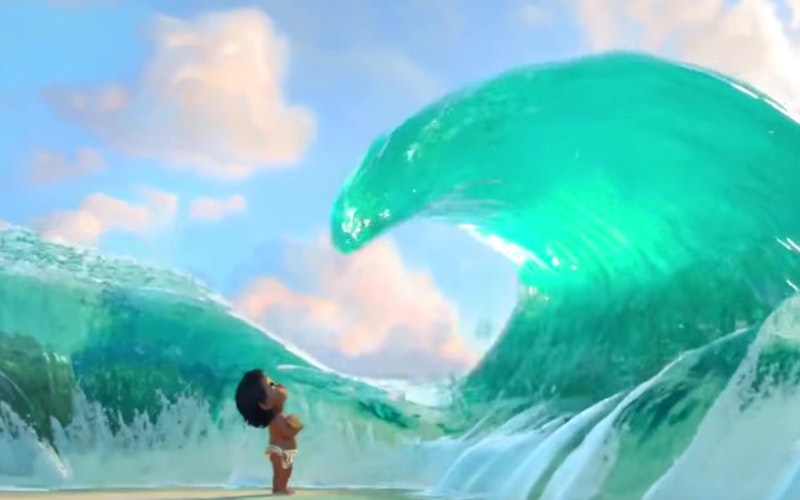
Movies
Moana and Living Water
Moana, Disney’s big new animated musical, draws on Polynesian mythology as its primary source of inspiration, yet as I watched it, I couldn’t help thinking of John 4. Set on an island in the ancient South Pacific, Moana employs water as a constant visual motif. Indeed, the ocean itself becomes an embodied presence—even its own character—in a way that brings to mind the biblical notion of “living water.”
The title character (voiced by Auli'i Cravalho) is the young daughter of the island’s chief. While most of the islanders are content to stay safely near shore, Moana has always longed to explore the greater ocean. She gets her chance when the island is threatened by a decaying force and she must set sail to seek help from the demigod Maui (voiced by Dwayne “The Rock” Johnson).
Maui is a prominent figure in Hawaiian, Samoan, Maori, and other Polynesian myths, something akin to Hercules of Greek lore. He’s a playful presence here, as the casting of Johnson would suggest, especially in a delightfully hubristic production number called “You’re Welcome.” (The song is sung by Johnson, with music and lyrics by Opetaia Foa'i, Mark Mancina, and Lin-Manuel Miranda, he of Hamilton fame.)
The ocean itself becomes an embodied presence in a way that brings to mind the biblical notion of living water.
It was not the music, however, but the watery visuals in Moana that reminded me of John 4, in which Jesus meets a Samaritan woman at a well. Despite the social barriers between them, he acknowledges her struggle and offers her “a spring of water welling up to eternal life.” Jesus’ description of himself as living water and Moana’s depiction of the ocean waters share three powerful similarities:
Both are inviting. Early on in the film, there’s a wonderful scene of Moana, as a toddler, playing at the beach. The tide rolls in, teasing her as tides do, and then dramatically rolls back to reveal an enticing shell on the now-dry sand. She waddles toward it, and just as she reaches it the water rolls back again to reveal another shell, further out. This continues until eventually Moana is surrounded by a rippling wall of water that bends towards her, reaching for her curious, outstretched hand. This is an invitation to an unusual relationship, much like the one extended to a rejected Samaritan woman by Jesus, a Jew.
Both are sustaining. Once Moana has found the supercilious Maui, he tells her that he’ll finish the journey on his own without her help, and goes so far as to push her off the raft to make his point. Before he can smugly smile, the ocean forms a small wave that plops Moana right back on the boat. The ocean saves Moana again and again in this way, offering a lively echo of Jesus’ saving grace.
Both are healing. During its climax (which I won’t spoil), Moana calls back to that early scene of the retreating tide. This time, an entire lagoon parts (a reminder of the parting of the Red Sea), allowing Moana to walk across the dry lagoon floor to meet a character in need of healing. This miraculous scene recalls the reconciling power of Jesus’ act in in John 4. By acknowledging the Samaritan woman’s adulterous path and setting the groundwork for reconciliation, he pointed her to a better way forward, one in which the water he offers is all we need.
Topics: Movies, Culture At Large, Arts & Leisure